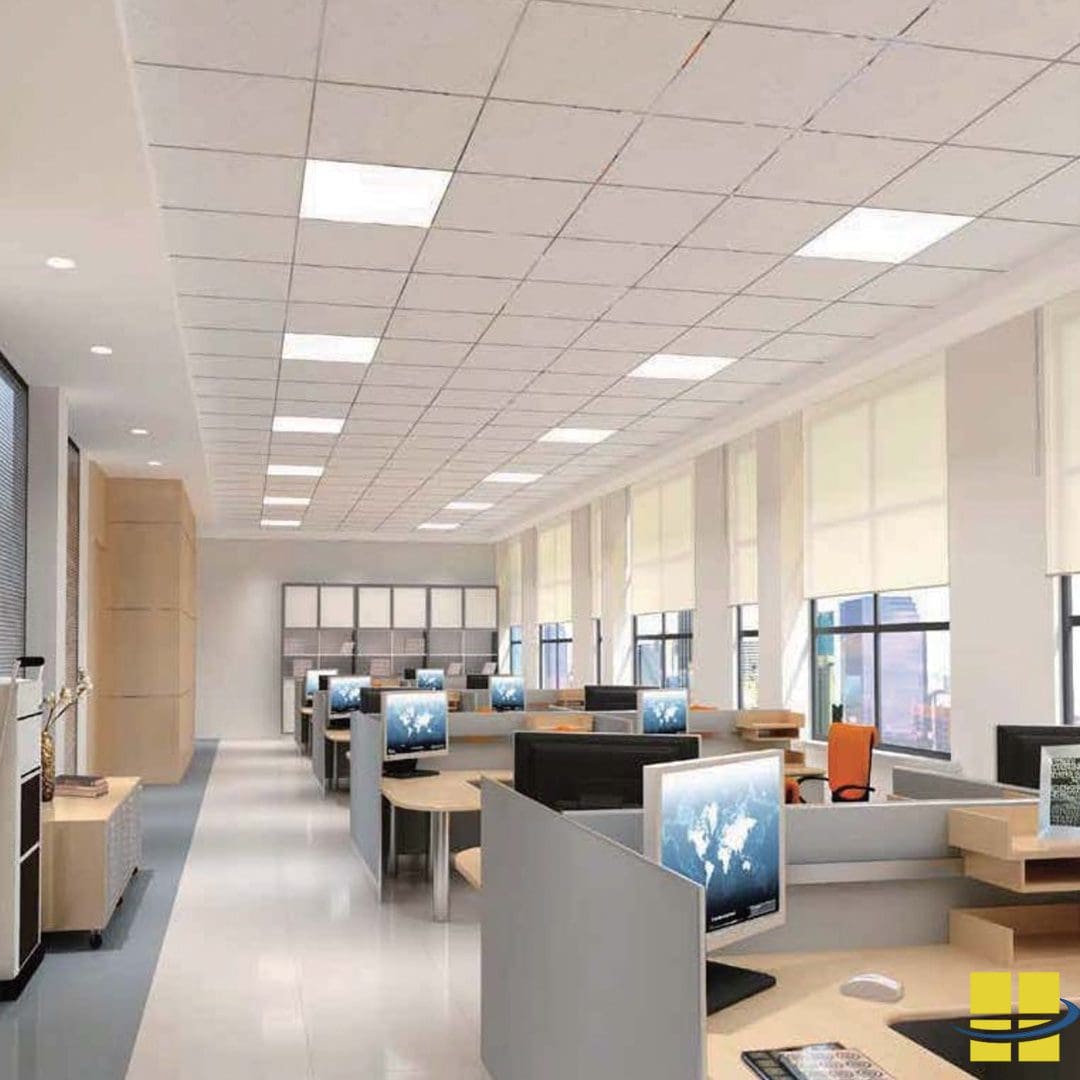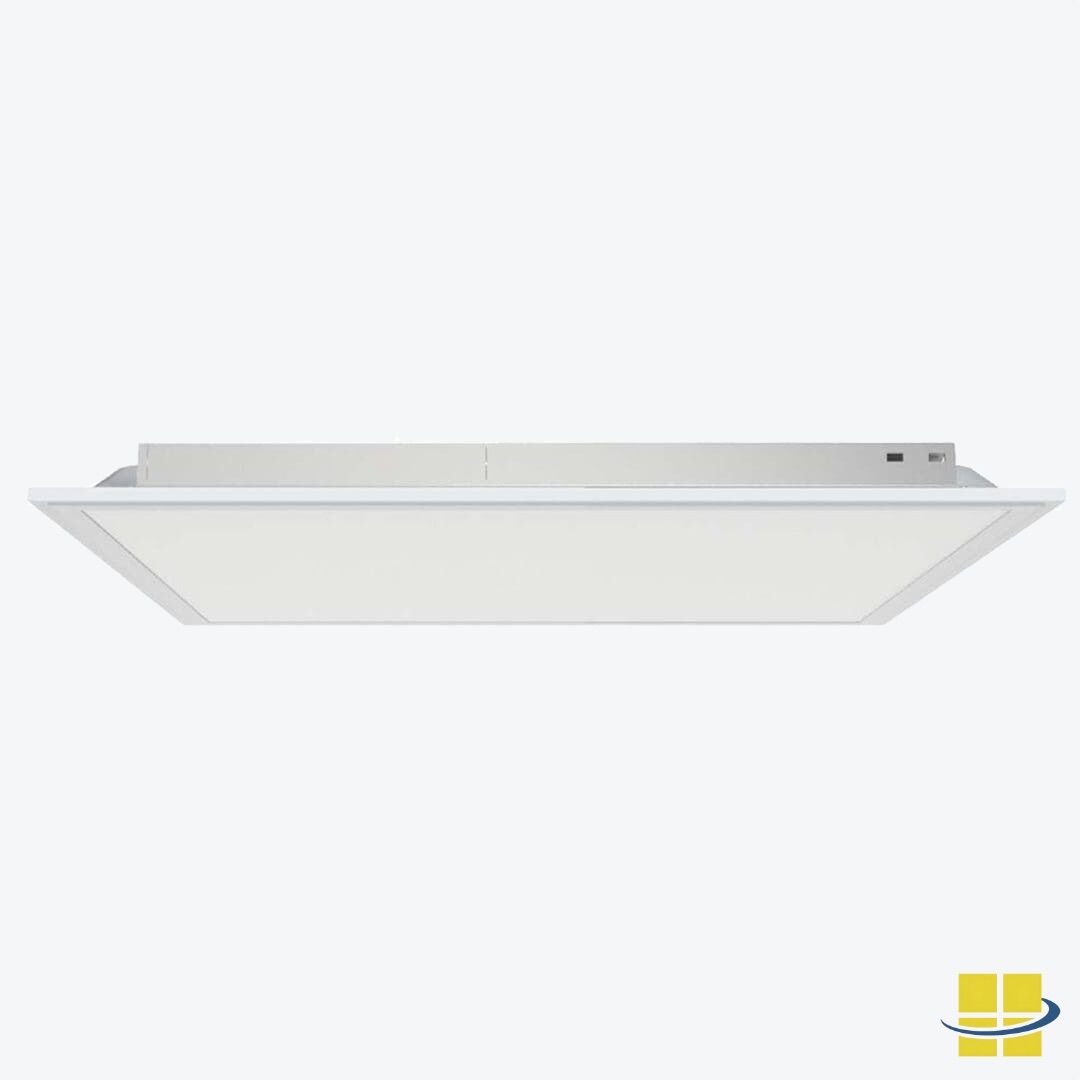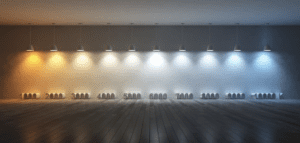How Many Lumens for Office Lighting: A Guide to Properly Light an Office
Office Lighting: What You Need to Know to Properly Light Your Office
Kelvin and lumens and footcandles, oh my. Proper lighting is essential for creating a productive and comfortable work environment in office spaces. For now, let’s keep it simple.
Key Takeaways
-
- Proper Lighting Enhances Productivity and Comfort: Well-designed office lighting reduces eye strain, improves visibility, and enhances employee morale and efficiency. Meeting recommended footcandle levels for different tasks ensures a comfortable and productive work environment.
- Understanding Lumens, Footcandles, and Color Temperature is Essential: Lumens measure the total light output, while footcandles determine the actual illumination in a workspace. Choosing the right color temperature (3000K, 4000K, or 5000K) influences the ambiance and functionality of the office.
- Customizable and Energy-Efficient Lighting Solutions Optimize Performance: Office lighting solutions, such as 0-10V dimming and selectable wattage fixtures, provide flexibility to adjust brightness as needed. LED lighting enhances sustainability, reducing energy consumption and maintenance costs.
Importance of Proper Lighting
Proper lighting is essential for creating a productive and comfortable work environment in an office space. It can significantly impact employee morale, focus, and overall well-being. Adequate lighting reduces eye strain, improves visibility, and enhances the aesthetic appeal of the office. Moreover, proper lighting can help minimize errors, improve business performance, and even reduce the risk of OSHA fines. Ensuring that your office space is well-lit can lead to a more efficient and pleasant work atmosphere, ultimately benefiting both employees and the organization.
This Office Lighting is Too Bright, Too Dim, or Just Right?
What are office lighting standards/office lighting requirements?
Over the years, office lighting standards, also known as office lighting requirements, have changed. From 1915 to the ‘30s, electric supplies were limited and expensive, and light bulbs were primarily incandescent lamps. Light bulbs only emitted about 10 lumens per watt, so a 200-watt light bulb emitted 2000 lumens (lm). As it took a lot of electricity to produce some light and the lightbulbs had to be replaced frequently, recommended footcandles (FC) were rather low.
During that time recommended fc for detailed work, such as auditing, accounting, and business machine operation started at 1.25-foot candles and eventually were raised to 10fc. With the advent of fluorescent lighting fc requirements went up significantly. To reduce eye strain in the ‘40s the recommendation was 50fc and in the ‘80s the recommendation was as much as 100 fc.
As computers with higher-powered visual displays became commonplace, FC requirements fell. To reduce glare and eye strain now, less office light is frequently preferred. Office lighting recommendations today are 3fc for data processing tasks, 30fc for printed tasks, 30fc for meeting rooms, and 50fc for video conferencing. Private offices may have as many as 50 ft candles but frequently a private office will have a dimming system, or, the office occupant can select which lights turn on and which to leave off.
What are the lumens I need for office lighting? Lumens per Square Foot vs. Footcandles.
People investigating office lighting frequently ask how many lumens they need for office lighting. When planning office lighting, it’s important to consider the recommended lumens per square foot to ensure adequate illumination for various tasks. Lumens is a measurement of the amount of light emitted by a light source. Luminous does not determine how much light is emitted onto a work surface. That measurement is footcandles (fc). For example, an office light fixture may emit 4000 lumens (lm). If the light fixture is 12 inches from the work surface the footcandles will be higher than if the light fixture is 12 ft from the work surface. The lumens emitted by the light fixture did not change, but the fc did. What matters is foofcandles. How many footcandles are on the work surface.
Calculating Light Output Needs
Calculating the light output needs of an office space is crucial to ensure that the space is adequately lit. The lumen method is a widely used formula for determining the total lighting requirements for a space. This method involves multiplying the foot candle recommendation by the square footage of the space. For instance, if an office space is 100 square feet and the recommended foot candles for the tasks performed there is 30, you would need 3,000 lumens (30 foot candles x 100 square feet). This calculation helps ensure that every corner of your office space has enough light for optimal functionality.


This Office Lighting is Too Blue, Too White, Too Warm, or Just Right?
What is the difference between 3000K, 4000K, and 5000K?
Color temperature indicates whether the lamp or LEDs have a warm, neutral, or cool color appearance. Color temperature indicates the appearance of the visible light emitted by a lamp or LED. Color temperatures are measured in Kelvin (K). Warmer Kelvin such as 3000K is similar to the color of light emitted by a halogen light. 4000K is the Kelvin emitted by most fluorescent lights. 5000K is even whiter. The chart below provides a good example of the difference between 3000K, 4000K and 5000K.

What office lighting color temperature should I select?
Office lighting color temperature is a preference. At Access Fixtures, we selected 3000K for our office lighting. 3000K is warm and comfortable. We are located in a mill building built around 1908. We have high ceilings. Tall windows flood the office with natural light. The light fixtures are antique style pendant lights. The light bulbs are filamented LED. Art and signage is highlighted with 3000K light bulbs in track heads. It is old school cool. Whiter light 4000K and 5000K can work well for other locations. If you were trying to create a more modern open office, Access Fixtures’ choice of 3000K would probably not work for you. 4000K would work and 5000K might work too.
Can I Adjust the Amount of Lumens Emitted by the Office Lights?
What are 0-10v Dimming Controls for office lighting?
Most LED light bulbs can be dimmed by using the same dimmers used for incandescent and halogen light bulbs. This includes those used in overhead lights, which are crucial for providing ambient lighting in office spaces. Office light fixtures have integrated drivers. Most of the drivers have 0-10v dimming. 0-10v dimming requires a 5 wire system and a special dimmer. If you already have the wiring in place, 0-10v dimming is easy to install. If rewiring is easy, you can add two love voltage wires for 0-10v controls. For more information about 0-10v dimming check out this web page. https://www.accessfixtures.com/0-10v-dimmers-for-led-fixtures/
What is selectable wattage for office lighting?
Another way to adjust the lumen output of your office lighting and thus the footcandles on the work surface is to use office lighting with selectable wattage. Office light fixtures with selectable wattage typically have 4 different settings for wattage. By switching the toggles, you can either increase or decrease the light emitted by the light fixture. Of course to change the amount of light emitted, you have to change the switches on the back of the fixture, so unlike 0-10v dimming this is not something that you would be adjusting throughout the day.
What are my office lighting options? LED Lighting and More
There are a lot of options for office lighting. In addition to general lighting, task lighting is essential for specific activities that require focused illumination. For now, let’s keep it simple. Suspended ceilings are the most common type of ceiling found in Class A and Class B office space. Suspended ceilings use either 2’ x 2’ and/or 2’ x 4’ LED lights. There are two primary types of LED lights for suspended ceilings, flat panels or baskets which might be considered more stylish.
Access Fixtures flat panel lights are GAYA. GAYA helps simplify selecting the correct office lighting for your office. GAYA have selectable Kelvin, selectable wattage, and 0-10v dimming. You can easily select the Kelvin and wattage in your office and determine what your preferences are on-site. Additionally, if you have 0-10v dimming wiring and controls, you can change the amount of light emitted whenever you like.
Selecting High-Quality Fixtures
Selecting high-quality lighting fixtures is essential for achieving the right light levels in an office space. When choosing fixtures, consider factors such as color rendering index (CRI), beam angle, dimming capability, and brightness. High-quality LED lighting fixtures are energy-efficient, durable, and can be tailored to meet specific lumen requirements. Look for fixtures with a high CRI to ensure that colors appear accurately, and consider adjustable beam angles to create a more even light distribution. Investing in top-notch lighting fixtures can make a significant difference in the overall lighting quality of your office space.
Maximizing Natural Light
Maximizing natural light in an office space can significantly reduce the need for artificial lighting. Natural light not only provides enough illumination for many tasks but also helps save on energy costs. If your office has large windows, consider using dimmable fixtures to adjust the lighting based on the amount of natural light available. Additionally, using light-colored walls and ceilings can reflect natural light, further reducing the need for artificial lighting. By making the most of natural light, you can create a brighter, more inviting office space while also being energy-efficient.
Balancing Efficiency and Sustainability
Balancing efficiency and sustainability is crucial when it comes to office lighting. Energy-efficient lighting options can reduce energy consumption and minimize environmental impact. Consider using LED lighting, which is highly energy-efficient and can reduce energy consumption by up to 75% compared to traditional lighting sources. Additionally, smart lighting systems can adjust lighting levels based on occupancy and natural light, further enhancing energy efficiency. By focusing on both efficiency and sustainability, you can create an office lighting system that is both cost-effective and environmentally friendly.
Energy-Efficient Lighting Options
Energy-efficient lighting options are essential for reducing energy consumption and minimizing environmental impact. LED lighting is a popular choice, offering up to 75% energy savings compared to traditional lighting sources. Other energy-efficient options include fluorescent lighting, halogen lighting, and smart lighting systems. When selecting energy-efficient lighting, consider factors such as lumen output, color temperature, and dimming capability. By choosing the right energy-efficient lighting options, you can create a well-lit office space that is both sustainable and cost-effective.
How Do I Find My Office Lighting Solution?
Need advice? Speak with an Access Fixtures lighting specialist. Access Fixture lighting specialists fixate on lighting all day long and will be glad to help you find your office’s high-performance lighting solution.
How can I get an office lighting plan or office lighting layout?
Need to take it further? Access Fixtures lighting specialists and lighting engineers can run a photometric study. For more information click on this link or call an Access Fixtures lighting specialist at 800.468.9925.
Conclusion
Selecting the right office lighting is crucial for creating an efficient, comfortable, and productive workspace. By balancing brightness levels, color temperature, and energy efficiency, businesses can optimize lighting for various tasks while maintaining sustainability. Investing in high-quality, adjustable lighting solutions ensures long-term benefits for both employees and operational efficiency.
Office Lighting Frequently Asked Questions (FAQs)
What is the recommended brightness level for office lighting?
The recommended brightness levels depend on the tasks being performed. For general office work, 30 footcandles (fc) is ideal, while data processing may require as little as 3fc. Video conferencing and private offices typically need 50fc for better visibility.
What is the difference between lumens and footcandles?
Lumens measure the total light output from a fixture, while footcandles measure the amount of light that actually reaches a surface. Footcandles are the critical factor in determining whether a workspace has adequate illumination.
How do I calculate the lumens needed for my office space?
Multiply the recommended footcandles for your task by the square footage of the area. For example, a 100-square-foot office requiring 30 footcandles would need 3,000 lumens (30fc × 100 sq. ft.).
What color temperature is best for office lighting?
The best color temperature depends on the desired ambiance. 3000K provides a warm, comfortable feel, 4000K offers a balanced, neutral tone, and 5000K creates a bright, daylight-like atmosphere.
Can office lighting be adjusted for different tasks?
Yes, many modern office fixtures feature 0-10V dimming and selectable wattage, allowing users to adjust brightness levels based on specific needs, reducing glare and enhancing productivity.
What are 0-10V dimming controls, and how do they work?
0-10V dimming controls allow for smooth adjustments in brightness using low-voltage wiring and a compatible dimmer. This system is often integrated into office lighting to improve energy efficiency and comfort.
Are there energy-efficient office lighting options?
Yes, LED lighting is the most energy-efficient choice, reducing energy consumption by up to 75% compared to traditional lighting. Smart lighting systems and dimmable fixtures further enhance efficiency.
How can I maximize natural light in my office?
To maximize natural light, use light-colored walls, open layouts, and dimmable fixtures that adjust brightness based on daylight availability. This reduces artificial lighting needs and creates a more inviting workspace.
What are the best lighting fixtures for suspended ceilings?
The most common office lighting options for suspended ceilings are 2′ x 2′ and 2′ x 4′ LED flat panels or basket-style fixtures. These provide even illumination and come with features like selectable wattage and dimming.
How do I get an office lighting plan or layout?
A photometric study can help determine the best lighting layout for your office. Access Fixtures lighting specialists can assist with a customized office lighting plan to ensure optimal illumination and efficiency.

